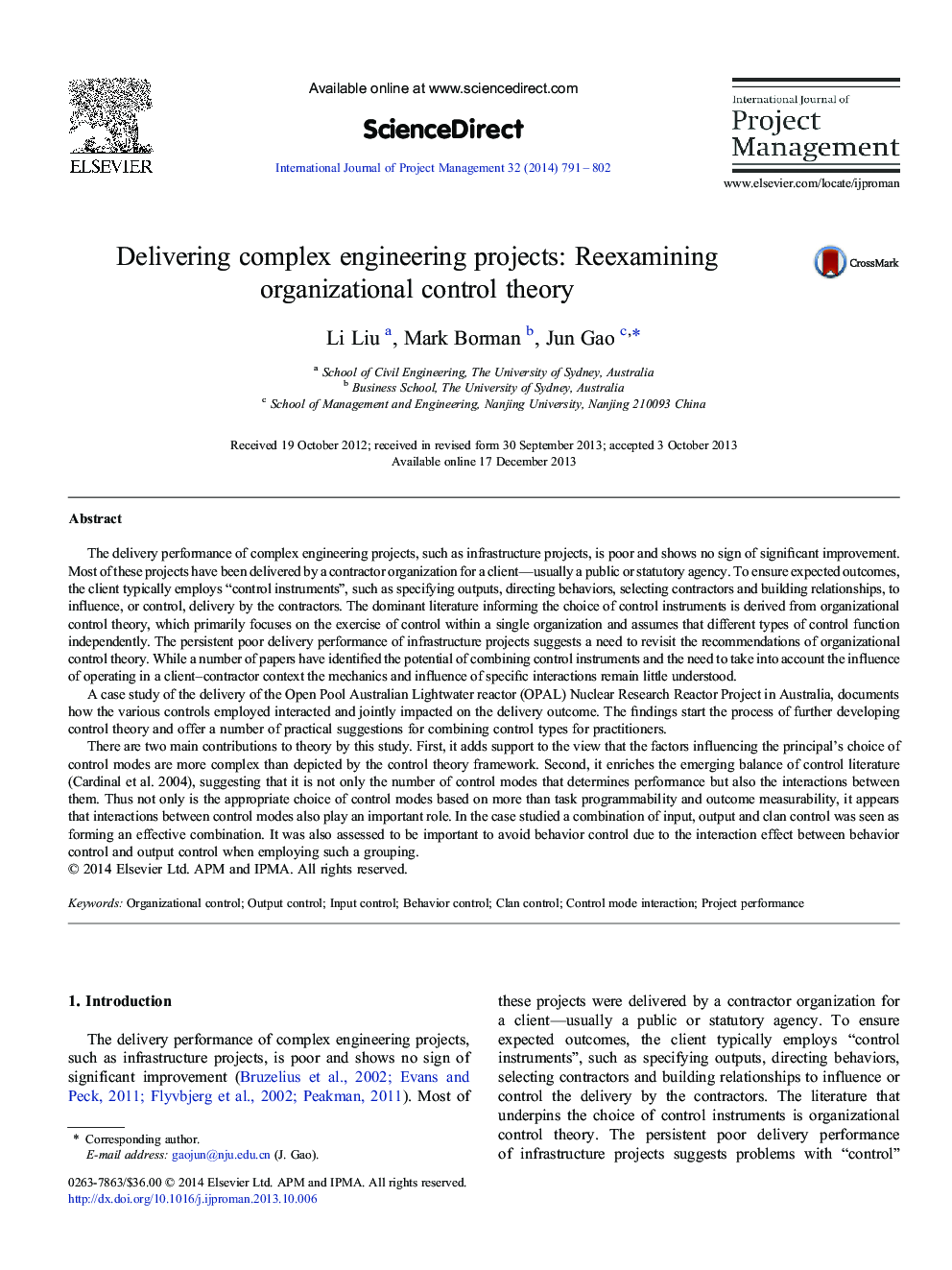| کد مقاله | کد نشریه | سال انتشار | مقاله انگلیسی | نسخه تمام متن |
|---|---|---|---|---|
| 276393 | 1429679 | 2014 | 12 صفحه PDF | دانلود رایگان |
• Choice of control modes is more complex than depicted by the control theory
• It is the interactions, not the number of control modes that determines performance
• Interactions among control modes play important roles in the choice
• Mix of input, output and clan controls can be effective in client-contractor settings
• Behavior control should be avoided due to interactions with output control
The delivery performance of complex engineering projects, such as infrastructure projects, is poor and shows no sign of significant improvement. Most of these projects have been delivered by a contractor organization for a client—usually a public or statutory agency. To ensure expected outcomes, the client typically employs “control instruments”, such as specifying outputs, directing behaviors, selecting contractors and building relationships, to influence, or control, delivery by the contractors. The dominant literature informing the choice of control instruments is derived from organizational control theory, which primarily focuses on the exercise of control within a single organization and assumes that different types of control function independently. The persistent poor delivery performance of infrastructure projects suggests a need to revisit the recommendations of organizational control theory. While a number of papers have identified the potential of combining control instruments and the need to take into account the influence of operating in a client–contractor context the mechanics and influence of specific interactions remain little understood.A case study of the delivery of the Open Pool Australian Lightwater reactor (OPAL) Nuclear Research Reactor Project in Australia, documents how the various controls employed interacted and jointly impacted on the delivery outcome. The findings start the process of further developing control theory and offer a number of practical suggestions for combining control types for practitioners.There are two main contributions to theory by this study. First, it adds support to the view that the factors influencing the principal's choice of control modes are more complex than depicted by the control theory framework. Second, it enriches the emerging balance of control literature (Cardinal et al. 2004), suggesting that it is not only the number of control modes that determines performance but also the interactions between them. Thus not only is the appropriate choice of control modes based on more than task programmability and outcome measurability, it appears that interactions between control modes also play an important role. In the case studied a combination of input, output and clan control was seen as forming an effective combination. It was also assessed to be important to avoid behavior control due to the interaction effect between behavior control and output control when employing such a grouping.
Journal: International Journal of Project Management - Volume 32, Issue 5, July 2014, Pages 791–802
